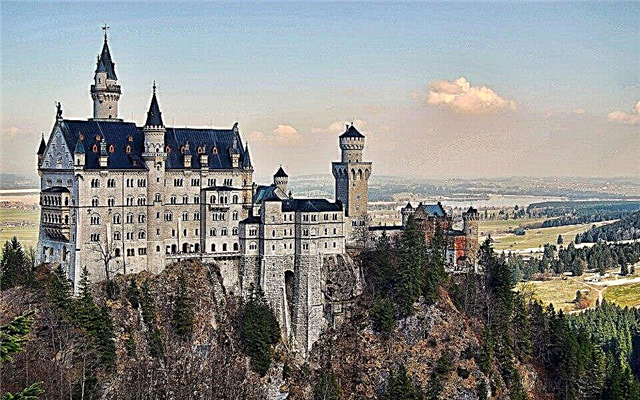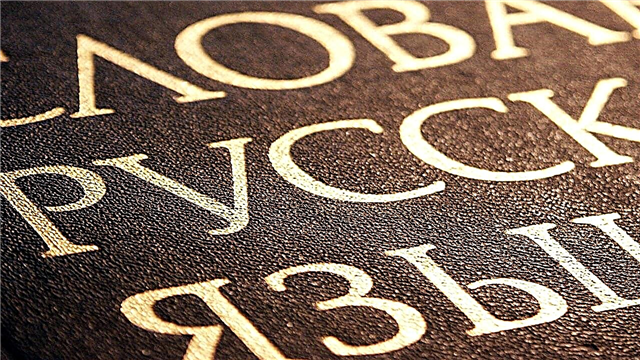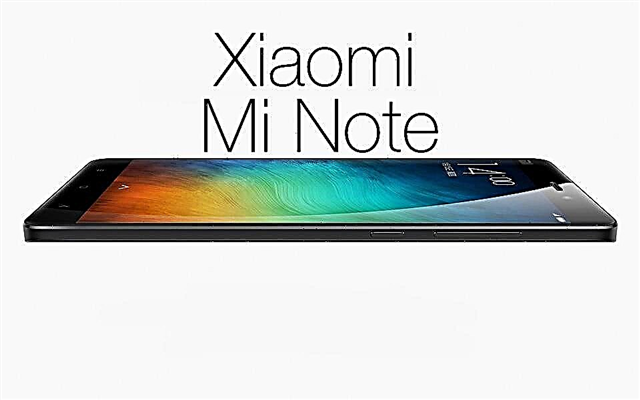In summer, the roads get hotter. Therefore, car tires must be optimized according to the season for instant response to any driver’s maneuver. At temperatures above 15 degrees Celsius, summer car tires can respond to braking faster than other types of tires.
Updated article: Rating of summer tires 2020.
Having studied the best offers of Yandex.Market and the results of the tests “Driving” and “Auto Review” we compiled a rating of summer tires in 2019, which included the best new items and popular models.
Summer tire tests “Driving”
Last year, experts from the authoritative automotive publication Za Rulem tested the most popular summer tires for 2019; actual rubber tests in the amount of R15 and R17 are shown in the comparative table of results.


10. Continental ContiPremiumContact 5
The average price for one R15 tire is 4 110 rubles.
 Opens the rating of the best summer tires of 2019 with a diameter of R15 quiet tires with movable sidewall technology. The latter means that a very soft sidewall collapses and cushions when the car drives through bumps. These tires hold both the road dry and wet from rain and provide confident braking.
Opens the rating of the best summer tires of 2019 with a diameter of R15 quiet tires with movable sidewall technology. The latter means that a very soft sidewall collapses and cushions when the car drives through bumps. These tires hold both the road dry and wet from rain and provide confident braking.
Ideal for a family car, for which comfort and smoothness are more important than high speed.
disadvantages: associated with the main advantage - a soft sidewall. Falling into a pit, hitting a curb and similar situations can be fraught with tire “injury”.
9. Toyo Nano Energy 3
The average price is 2 570 rubles.
 An inexpensive and at the same time high-quality tire from a Japanese manufacturer, which goes well both in small and medium irregularities, and does not make much noise. She has a good grip with both wet and dry roads and excellent directional stability.
An inexpensive and at the same time high-quality tire from a Japanese manufacturer, which goes well both in small and medium irregularities, and does not make much noise. She has a good grip with both wet and dry roads and excellent directional stability.
Of course, these tires are not suitable for deep mud or racing, however, they are quite suitable for trips around the city and on long-distance routes.
disadvantages: Small stones constantly fill into the tread.
8. Viatti Strada Asimmetrico V-130
The average price is 2,700 rubles.
 Another excellent budget option in the 2019 top. These tires have strong sidewalls and excellent grip, even in heavy rain. They “swallow” small pits, provide good controllability of the machine and brake well on dry and wet asphalt, as well as on dirt roads.
Another excellent budget option in the 2019 top. These tires have strong sidewalls and excellent grip, even in heavy rain. They “swallow” small pits, provide good controllability of the machine and brake well on dry and wet asphalt, as well as on dirt roads.
disadvantages: noisy, strongly "clap" in the pits.
7. Nokian Tires Hakka Green 2
The average price is 3,600 rubles.
 One of the most comfortable tires in the test, both in terms of softness and noise quality. According to the manufacturer, this model is characterized by uncompromising grip on wet pavement and extremely low fuel consumption.
One of the most comfortable tires in the test, both in terms of softness and noise quality. According to the manufacturer, this model is characterized by uncompromising grip on wet pavement and extremely low fuel consumption.
Indeed, according to drivers, the Hakka Green 2 tires have excellent grip, which is surprising for such a soft rubber. Even with a sharp turn into a turn and fast driving on the highway (up to 100-110 km / h), the Hakka Green 2 car behaves confidently and reliably, it does not drift and does not demolish.
disadvantages: wears out quickly.
6. Viatti Bosco A / T
The average price is 4,252 rubles.
 Many review sites, car publishers, and motoring forums, answering the question “What summer tires are best for SUVs and crossovers?” Recommend Viatti Bosco A / T. There are five main reasons for this:
Many review sites, car publishers, and motoring forums, answering the question “What summer tires are best for SUVs and crossovers?” Recommend Viatti Bosco A / T. There are five main reasons for this:
- these tires are durable;
- wear resistant;
- not subject to aquaplaning;
- have good braking performance;
- have good adhesion to various types of road surface and off-road.
disadvantages: noisy.
5. MICHELIN Primacy 4
The average price is 4,830 rubles.
 The first five of the best summer tires in 2019 opens with a model tested by time and Russian roads. Thick and at the same time not rigid sidewalls perfectly smooth out small irregularities, and the rubber itself does not tan, which allows it to be operated at temperatures up to zero degrees.
The first five of the best summer tires in 2019 opens with a model tested by time and Russian roads. Thick and at the same time not rigid sidewalls perfectly smooth out small irregularities, and the rubber itself does not tan, which allows it to be operated at temperatures up to zero degrees.
MICHELIN Primacy 4 also has a short braking distance on both dry and wet asphalt, good wear resistance, and decent resistance to aquaplaning.
disadvantages: noise, collects small pebbles.
4. Kumho Ecsta HS51
The average price is 2 750 rubles.
 Tires made in Korea are good in all respects. They do not make noise, and they keep the road confidently on any surface, and are perfectly balanced, and smoothly go at low and medium speeds. In the reviews, the drivers say that the Kumho Ecsta HS51 is not made for racing, but for comfort.
Tires made in Korea are good in all respects. They do not make noise, and they keep the road confidently on any surface, and are perfectly balanced, and smoothly go at low and medium speeds. In the reviews, the drivers say that the Kumho Ecsta HS51 is not made for racing, but for comfort.
Another significant advantage of these tires is a high coefficient of wear resistance (Treadwear 380).
disadvantages: because of the high softness of the tires, they slow down a little worse than their "colleagues" from the first three.
3. Toyo Proxes CF2
The average price is 2 980 rubles.
 Neither pits nor bumps are terrible for this reliable Japanese summer tires. Among its other advantages: predictability, rapid braking, low noise, high wear resistance, excellent drainage and good adhesion to dry and wet asphalt.
Neither pits nor bumps are terrible for this reliable Japanese summer tires. Among its other advantages: predictability, rapid braking, low noise, high wear resistance, excellent drainage and good adhesion to dry and wet asphalt.
disadvantages: the tread quickly becomes clogged with small pebbles; when visually inspected, the tires look slightly deflated.
2. Bridgestone Turanza T001
The average price is 3,600 rubles.
 These Japanese-made tires entered the top ten tests of the 2019 R15-R16 “Driving” summer tires. They have high wear resistance, good handling both on dry and wet asphalt, and are an excellent example of the balance between handling and comfort.
These Japanese-made tires entered the top ten tests of the 2019 R15-R16 “Driving” summer tires. They have high wear resistance, good handling both on dry and wet asphalt, and are an excellent example of the balance between handling and comfort.
A large number of polymer components in the mixture ensures a long life of the Bridgestone Turanza T001 and reduced rolling resistance.
disadvantages: These tires are harsh due to the thick sides. However, many drivers attribute this to advantages rather than disadvantages, because such tires are resistant to deformation and cuts, and they have better directional stability than soft summer tires.
1. Continental PremiumContact 6
The average price is 5,187 rubles.
 Here are the tires, a novelty of the 2019 season, which took first place in the ranking of summer tires 2019 at the wheel of the size R17. This rubber is not only soft and beautiful, it also differs in ideal stability on a wet and slushy coating, and also without any drifts it enters into a prolonged turn. Although the sidewall of the tires is soft, they rarely appear “hernia” and cuts. But the pits on Continental PremiumContact 6 "eat up" with a bang.
Here are the tires, a novelty of the 2019 season, which took first place in the ranking of summer tires 2019 at the wheel of the size R17. This rubber is not only soft and beautiful, it also differs in ideal stability on a wet and slushy coating, and also without any drifts it enters into a prolonged turn. Although the sidewall of the tires is soft, they rarely appear “hernia” and cuts. But the pits on Continental PremiumContact 6 "eat up" with a bang.
disadvantages: at high speed (from 140 km / h) the tires begin to “sing”, they go poorly on the track.












